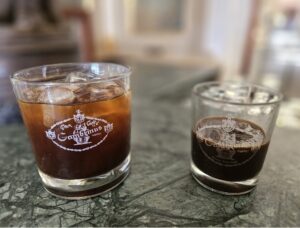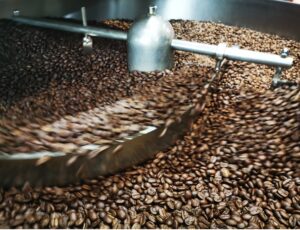Caffè Italiano e Caffè Napoletano: ecco le 5 differenze

Caffè Italiano e Caffè Napoletano: ecco le 5 differenze
Il Bel Paese è la patria del caffè, da secoli consumato da Nord a Sud della penisola, conosciuto e copiato in tutto il mondo. Il caffè è icona del nostro Paese. Non tutti sanno, però, che in Italia non esiste solo un tipo di caffè ma due. Il caffè italiano ed il caffè napoletano. Quello preparato a Milano, a Roma, piuttosto che a Torino o Venezia, è, sostanzialmente, tostato, realizzato e servito, in egual modo, insomma è identico in ogni città che non sia Napoli. Il caffè partenopeo è, invece, completamente diverso. Per miscela, tostatura, preparazione e, non ultima, per la maniera in cui viene servito. Senza dimenticare – e veramente non si potrebbe – che il caffè napoletano si differenzia anche per storia e tradizione, costituendo verace icona della nostra città.
Il nostro caffè è l’unico al mondo ad avere reali origini (fu Maria Carolina d’Asburgo, moglie di Ferdinando di Borbone, a proporlo, per prima, a Napoli e, quindi, nell’intero Regno delle Due Sicilie).
Inoltre il caffè napoletano è l’unica bevanda popolare che ha ispirato ed è stata protagonista del teatro, del cinema, della musica e della letteratura, nazionale e mondiale. Da Eduardo De Filippo a Pino Daniele, da Sofia Loren a Massimo Troisi. Il caffè napoletano è, insomma, eccellenza tra le eccellenze della nostra città e dell’Italia intera, come dimostrano le iniziative che, sempre più numerose, sono rivolte alla sua tutela.
Perché i lettori meglio intendano piace segnalare le cinque principali differenze tra il caffè italiano e quello napoletano.
1)Miscela
Il caffè proposto dalle torrefazioni napoletane si caratterizza per il gusto forte e deciso. I chicchi di caffè vengono tostati (cotti) più tempo e a temperature più alte. Aggiungendo alla tradizionale qualità arabica percentuali di qualità robusta, meno dolce e con una maggiore carica di caffeina. La “cremina” che si forma in superficie nella tazzina è dovuta proprio alla specie robusta. Ed è per questo che il caffè napoletano deve essere sempre “rigirato” con il cucchiaino (direttamente nella moka o nella napoletana se preparato in casa o nella tazzina se consumato al bar) al fine di mescolare la parte superficiale, più cremosa, con quella sottostante più liquida.
2) Acqua
Chi dice che l’elemento chiave di un buon caffè sia l’acqua certamente non sbaglia. L’acqua è uno dei due ingredienti insieme alla polvere di caffè della bevanda più diffusa al mondo. Quella napoletana viene dalle cristalline sorgenti del Serino, nei monti irpini. Acqua già conosciuta, apprezzata e bevuta ai tempi degli antichi romani. Ancora oggi tra le migliori per caratteristiche organolettiche e purezza.
3) Maniera di servire il caffè
Il forte caffè napoletano va bevuto in tazzina di porcellana bombata, caldissima. Per rendere attento e stimolante il momento della consumazione (di qui la classica esclamazione in vernacolo “Comm’ cazz’ coce”). Prima, però, bisogna bere un abbondante sorso d’acqua per “pulire” bocca e palato e meglio poter gustare l’agognata tazzullella. Il prodromico bicchiere d’acqua, a differenza che in ogni altra parte d’Italia, nei bar e nelle caffetterie napoletane è naturalmente servito in maniera gratuita in uno al caffè.
4) Barista
I baristi napoletani sono tra i più apprezzati e competenti, derivando il “mestiere” dall’insegnamento dei maestri caffettieri borbonici. La scuola napoletana del caffè, di generazione in generazione, continua ad eccellere proprio perché è riuscita a tramandare trucchi e segreti della realizzazione del nostro caffè.
5) Consumi
Napoli è prima in Italia per consumo di caffè e per numero di bar per chilometro quadrato. Un napoletano medio beve il caffè a colazione, in mattinata, dopo pranzo, il pomeriggio e anche dopo cena. Insomma un napoletano verace beve almeno cinque caffè al giorno! È un costume culturale, oltre ad essere un’abitudine alimentare, il momento d’aggregazione principe. Il tramite necessario e semplice dell’interscambio umano e sociale. Il napoletano preferisce condividere il caffè e non berlo da solo. Massimo Troisi diceva che berlo da solo è il massimo dell’umana solitudine. Tant’è che, quando fisicamente solo, lo condivide con uno sconosciuto che berrà il “sospeso” da lui lasciato pagato!
Articolo scritto da Michele Sergio e pubblicato su IL ROMA il 13 gennaio 2019





